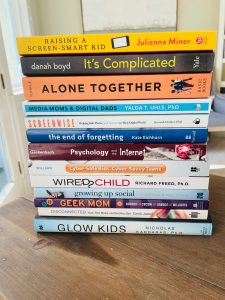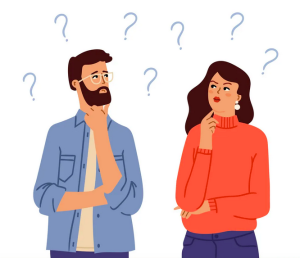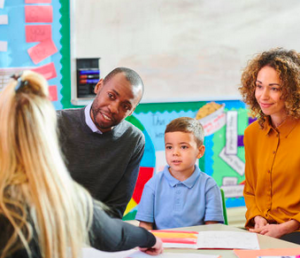There is no doubt that social media impacts how we our experience the world. Those of us who engage with the various social media platforms experience a direct influence that we would do well to understand. Even if you or your child have chosen to abstain from social media, the world at-large has not, which means you’re still impacted indirectly. This means we all have a responsibility to understand the ways in which social media may be (even passively) affecting our moods, our choices, and our understanding of our world.
Understanding the Personality Puzzle
Experts in psychology have long understood that innate personality traits shape what we seek out and avoid and the extent to which these tendencies and choices influence us. We measure these innate personality traits on 5 dimensions using the acronym O.C.E.A.N.: Openness, Conscientiousness, Extraversion, Agreeableness, and Neuroticism. Let’s look at what each of these traits are and the interplay between these traits and social media.
- Openness refers to our intellectual, creative, and experiential curiosity as well as our willingness to engage with new ideas and experiences.
- Conscientiousness refers to how detail-oriented we tend to be and whether we follow through on the things
- Extraversion explains how we experience groups and engagement with others.
- Agreeableness speaks to our tendency to seek connection, compromise, and collaboration over conflict.
- Neuroticism refers to the likelihood we will perceive distress and how long we will experience that distress.
So, what does this look like online?
If one is low in Openness, one might limit opposing views on their social media page. Conversely, someone high in Openness, would actively seek out broader input to better understand the complexity of an issue and consider opposing views. One’s level of Conscientiousness is linked to how diligently one will seek to verify information and how impulsively one might share unverified information. Where one falls on the scale of Extraversion (vs. Intraversion) relates to how much one will post and how frequently one will engage with others’ posts. Agreeableness explains the degree to which one seeks common ground with others as well as their willingness to post inflammatory or controversial content. People who score high the Neuroticism scale tend to experience more distress on social media and will experience that distress longer than someone who is low on this scale.
How do these traits work together?
- High Extraversion and low Conscientiousness is associated with greater social media use and addictive tendencies (Wilson, Fornasier & White, 2010).
- Those with a high level of Neuroticism, Agreeableness and Conscientiousness are more prone to reject all kinds of social media platforms (Alev Koçak Alan and Ebru Tü mer Kabadayı, 2016).
- The combination of high Neuroticism and Agreeableness are associated with elevated cortisol, the stress hormone (Agrigoroaei, Polito, et al., 2011).
- High levels of Neuroticism are likely going to be exacerbated by cyberostracism, or rejection/perceived rejection online, which mirrors what we know about rejection in real life – that it results in reduced self-esteem and decreased sense of belonging (William, Cheung & Choi, 2000).
- Negativity Bias: Given two facts of equal force, human tendency is to weigh more heavily the one with a negative connotation (Rozin & Royzman, 2001).
- People who are more likely to perceive intentional rejection in ambiguous situations (Downey and Feldman, 1996) so “vaguebooking,” or posting leading or baiting commentary, will cause people who are high in Neuroticism to personalize these posts and to feel that sting longer.
Who is at greatest risk?
What the research shows, and what I have seen in private practice, is that social media use can heighten challenges associated with anxiety, panic, paranoia, addiction, personality disorders, bipolar disorder, autism spectrum disorder, eating disorders, grief, self-image/self-esteem, and even ethnic identity. This is particularly troubling in the developing adolescent brain.
A closer look at the teen brain.
For many of us, the line between our real life and our virtual life blurred long ago and that’s not entirely unreasonable. On-line posts are a catalyst for real life conflict (Fono & Raynes-Goldie, 2006). Interpersonal rejection activates the pain center of the brain on an fMRI, the same region affected when we experience physical pain (Hsu, et al, 2013). Therefore, emotional pain inflicted virtually is actually no different than physical pain as far as our brain is concerned. Our brain doesn’t understand the difference between what happens to us in face-to-face interactions and what happens to us online. Pain is pain. Joy is joy. Where this gets really tricky is with teenagers who experience just about every emotion more intensely than at any other time of their life.
Teens face the major developmental challenge of figuring out who they are. The constant +/- feedback they receive on social media significantly impacts on this process. What gets rewarded gets repeated. So, even posting something stupid online, if it gets a lot of likes, will likely get repeated. If they post something positive and it’s met with silence, they may not post similar content again. It’s easy to see how online praise and judgment spills into their social and school lives where they’re trying to both stand out and fit in. This is one of the reasons it’s so hard to be a teenager.
The phenomenon of an “Imagined Audience,” a phrase coined by Dr. David Elkind in 1967, comes to mind here. Teens already think everyone is always watching them. By adulthood, we typically recognize that is an irrational thought. But, for today’s teens, the “Imagined Audience” is no longer imaginary. On social media, there actually IS an audience and it IS judging. Teens today have never lived in a world without social media. From a young age, they have been conditioned to do what will bring “likes.” These “likes” release dopamine, the happiness hormone. This is one reason it’s tough for teens to put their phones down. Dopamine feels good. Increased tolerance and an increasing need for more are the hallmarks of addiction. In this case, the drug is dopamine and the dealer is social media.
So, how do you know if your teen is likely to fall victim to the negative aspects of social media? Let’s look at the research:
- Teens, particularly female, who are prone to anxiety & depression use social media more frequently (Correa, et al 2009) and score higher on the Facebook Addiction Scale (Andreason, Torsheim, Brunborg & Paliesen, 2012).
- Unmonitored teens with unfettered access to the internet encounter more racism, pornography, bullying regardless of gender (Subrahmanyan & Greenfield, 2008).
- Those with a predisposition to eating disorders, particularly girls, may be negatively impacted by images and messaging around food, diet, and body image (Brooks, 2015).
- Those with substance abuse history may be negatively influenced by the casual normalization of drug and alcohol use (Brooks, 2015).
- Those who have experienced cyberostracism showed greater tendency to having a depressed mood. They also reported more compliant, approval-seeking behavior after the ostracism, as well as a sense of feeling devalued, out-of-control, and isolated (Williams, Cheung & Choi, 2000).
Oh, man! That doesn’t sound good.
For many of us, the ship has already sailed. We are online and so are our kids. Are we all doomed? No. Social media reflects our view of the world. What we seek out, engage with, and avoid is shaped by our personal interests and biases. We tend to engage with those who agree with us and avoid or discount those who disagree with us. We shape these influences by curating our pages. This power to curate can be both a blessing and a curse. We need to be careful not to create an echo chamber but still turn down the volume of voices that wreck our day. We owe it to ourselves to learn how to make social media meet our needs and notice when it is shaping us in ways we don’t like. Ask yourself: Is social media limiting your meaningful interaction with others? Making you feel angry? materialistic? vulnerable? insecure?
What can I do?
- Kids AND parents should follow very clear rules about appropriate use of social media AND group messaging apps.
- Check in with yourself/your kids regularly about how you/they are using social media and make adjustments as needed.
- Consider maturity-based requirements for accessing social media rather than age requirements. Most terms of service require users to be 13, but that doesn’t always mean your child is ready for it.
- Set app-specific screen time limits on mobile devices.
- Add more positive content to your news feed. Like/follow content that makes you feel good. Think: comedians, hobbyists, motivational speakers, etc.
- Block people who only post negative/inflammatory/snarky content. If you consistently feel bad or angry when you see their content, maybe it’s time to curate your page.
- Expand your news sources and always check your sources. When something sensational catches your eye, verify the source. Be sure you’re getting an objective viewpoint.
- Set rules about when and where you will access social media. I suggest avoiding it at family meals and before bedtime.
- Model responsible social media behavior for your family. It’s easier to enforce rules if you are following them yourself.
What’s the bottom line: Is social media my friend or foe?
Social media is a formidable force. Most of these apps are free which means keeping your attention is how they make money. When your attention is focused on positive and useful things, social media has tremendous potential to improve your life. When it’s focused on divisive and inflammatory content, it can bring out the worst in you. It’s important to retain our sense of agency. Remember, we are stronger than the powers that are trying to influence us. If we recognize our personal limitations and tendencies, as well as the clever ways companies try to keep our attention, we can avoid many of the common traps. Ultimately, we are the gatekeepers of our mental health. It’s our job, not Big Tech’s job to manage that.
Interesting. I want to know more.
If you would like more information on this subject, please contact Waypoint Wellness Center to schedule a social media primer with Erin Castleberry, MS, LCPC. She will tailor an in-person or virtual session for your unique personality and help you harness the positive and limit the negative influences of social media. Ms. Castleberry has created and taught a graduate-level course at Johns Hopkins University on this subject and has spoken internationally on the intersection of social media and mental health. She is also raising 3 teenagers who are navigating these issues in real time.




